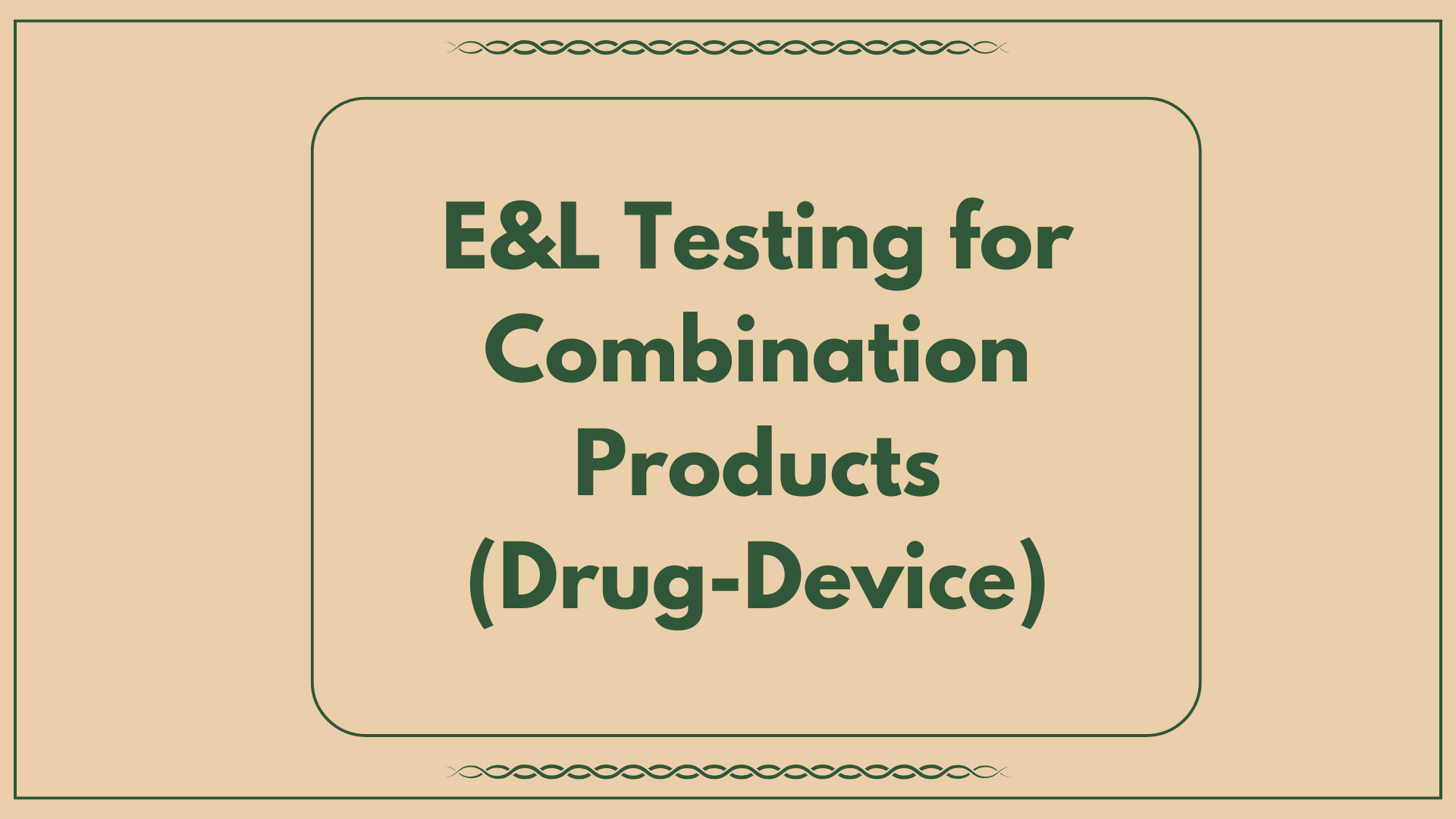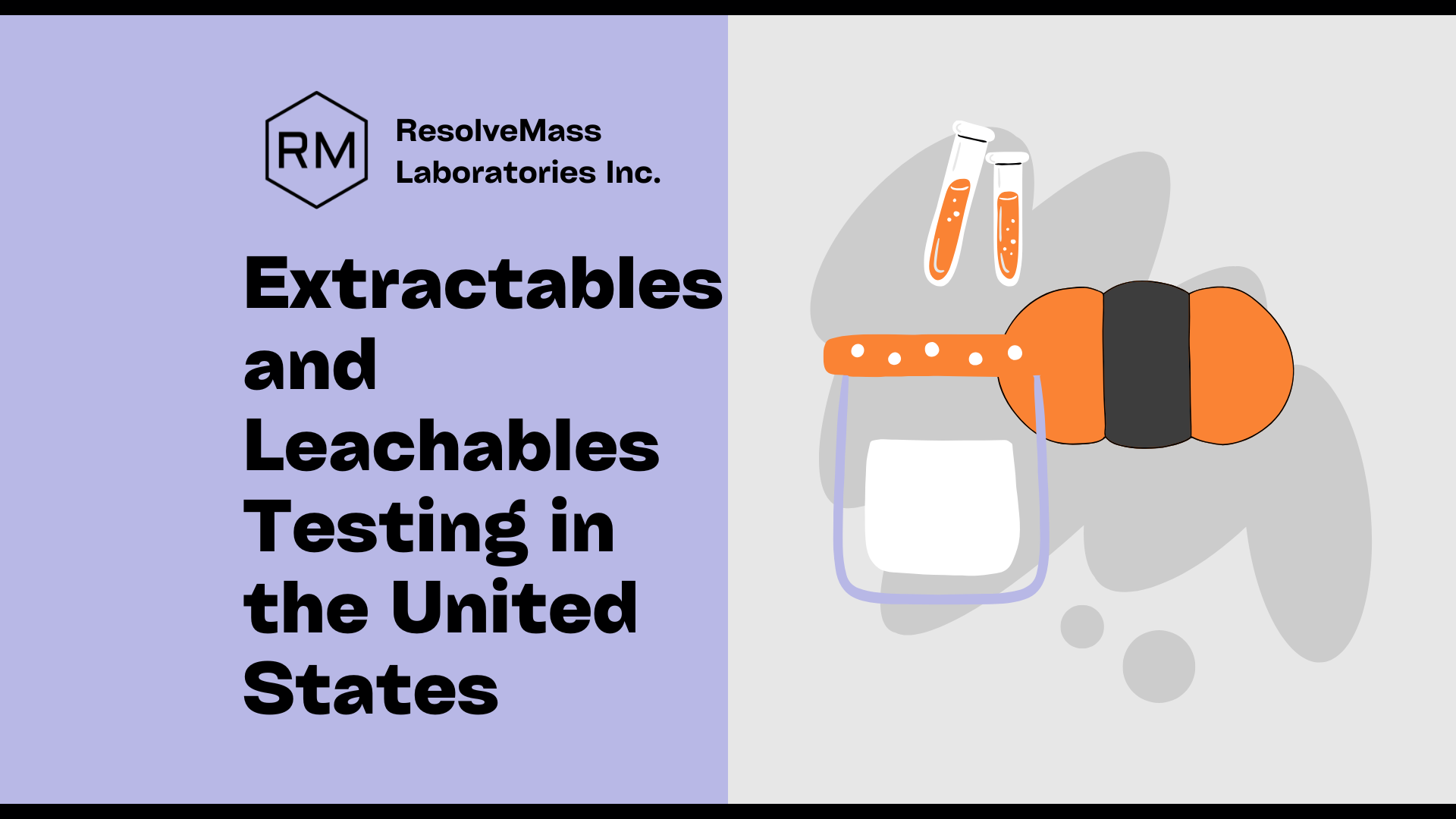Introduction
E&L Testing for Combination Products (Drug-Device) is a vital process that protects patient health, ensures compliance with strict regulations, and safeguards product performance. These products combine drugs, biologics, and medical devices, which makes them more complex and highly regulated. Extractables and leachables (E&L) are chemical substances that can migrate from device materials into the drug formulation, potentially impacting safety, drug stability, or overall effectiveness. At ResolveMass Laboratories Inc., we deliver complete E&L testing services that support developers from early product design through regulatory submission. By detecting risks early, our team helps manufacturers avoid costly delays and achieve faster approvals.
Quick Summary of E&L Testing for Combination Products
E&L Testing detects unwanted chemicals that may leach from device materials or packaging into drug formulations, keeping patients safe and products effective.
Regulatory agencies such as FDA, EMA, and Health Canada require rigorous studies for all combination products.
ResolveMass Laboratories specializes in ISO 10993-18, USP <1663>/<1664>, and advanced analytical methods for precise and reliable testing.
We design customized studies tailored to product type, formulation, and market pathway to meet compliance requirements.
Our clear reporting and quick turnaround times help manufacturers accelerate approvals and reduce time to market.
In addition, validated E&L data builds trust among clinicians, regulators, and patients by demonstrating long-term product safety and reliability.
What is E&L Testing for Combination Products?
E&L Testing for Combination Products focuses on identifying and measuring chemical compounds that migrate from medical device materials into drug formulations. Extractables are compounds detected under extreme laboratory conditions, while leachables are substances that migrate under normal storage or clinical use.
This process is especially important for drug-delivery systems like inhalers, prefilled syringes, infusion pumps, transdermal patches, and similar products. Without thorough E&L studies, patients could face exposure to toxic chemicals or unexpected drug interactions. Results from these tests also provide essential data for toxicological risk assessments, ensuring product safety throughout the entire lifecycle.
🔗 Learn more in our [E&L Testing FAQs]
Why is E&L Testing for Combination Products Important?
E&L Testing is crucial because even small amounts of leachables can affect drug quality, stability, or patient safety. Regulatory bodies require comprehensive studies to remove risks from harmful chemical migration. Testing provides assurance in four key areas:
- Patient Safety – Preventing toxic exposure from harmful substances.
- Product Quality – Preserving stability, potency, and effectiveness of the drug.
- Regulatory Compliance – Meeting FDA, EMA, and USP requirements.
- Device Integrity – Ensuring compatibility of device materials with the drug.
Additionally, long-term E&L studies predict interactions between drugs and materials over time. This allows developers to make better material choices before moving into full-scale production.
🔗 Read about the [cost of E&L testing]
Key Regulatory Guidelines for E&L Testing of Combination Products
Authorities around the world have established specific expectations for E&L testing. The most important guidelines include:
| Regulatory Body | Standard/Guideline | Scope |
|---|---|---|
| FDA | Combination Product Guidance | Evaluation of drug-device interactions |
| USP | <1663>, <1664> | Extractables and leachables studies |
| ISO | 10993-18 | Chemical characterization of device materials |
| EMA | CTD E&L Requirements | European submission standards |
Manufacturers must comply with these frameworks to achieve global market approvals. Proactive testing not only supports compliance but also speeds up the regulatory review process.
🔗 Explore [USP E&L standards here]
🔗 Learn about [ISO 10993-18 testing]
Typical Workflow of E&L Testing for Combination Products
The workflow for E&L Testing for Combination Products is structured to ensure reproducible and regulatory-compliant results:
- Material Characterization – Identifying polymers, elastomers, and coatings used in devices.
- Controlled Extraction Study – Detecting potential extractables under stress conditions.
- Leachables Study – Monitoring migration under storage and use conditions.
- Toxicological Risk Assessment – Comparing exposure with safety thresholds (AET).
- Regulatory Submission Support – Delivering validated data in clear reports.
This process helps manufacturers understand material-drug interactions and prevent costly product recalls.
🔗 How to [conduct E&L studies]
Analytical Techniques Used in E&L Testing for Combination Products
E&L studies rely on advanced analytical tools that detect chemicals at very low levels. The main techniques include:
- LC-MS/MS – Liquid Chromatography–Mass Spectrometry
- GC-MS – Gas Chromatography–Mass Spectrometry
- ICP-MS – Inductively Coupled Plasma Mass Spectrometry
- FTIR, NMR, UV-Vis Spectroscopy
Selecting the right technique depends on the device material, drug formulation, and regulatory requirements. Combining multiple methods gives laboratories a complete chemical profile for accurate evaluations.
🔗 Explore [analytical techniques in detail]
Challenges in E&L Testing for Combination Products
E&L testing can be complex due to the unique properties of drug-device products. Major challenges include:
- Diverse Materials – Use of plastics, metals, glass, and elastomers.
- Drug Sensitivity – Biologics and proteins degrade more easily.
- Storage Conditions – Long-term vs. accelerated studies must be balanced.
- Global Regulations – Different standards across FDA, EMA, PMDA, and others.
Expert laboratories with advanced tools and regulatory knowledge help overcome these issues and ensure global acceptance of results.
🔗 Learn about [controlled extractables study]
Why Choose ResolveMass Laboratories for E&L Testing of Combination Products?
ResolveMass Laboratories Inc. offers both scientific and regulatory expertise to deliver high-quality, trusted results. Our strengths include:
- End-to-End Services – From study design to final submission.
- Tailored Study Design – Custom testing for specific products and formulations.
- Regulatory Ready Reports – Accepted by FDA, EMA, and Health Canada.
- Advanced Facilities – Equipped with state-of-the-art instrumentation.
- Faster Timelines – Expedited studies available for urgent projects.
Choosing ResolveMass means gaining a partner that ensures accuracy, compliance, and faster access to global markets.
🔗 Discover [affordable E&L testing solutions]
🔗 Learn about our [custom study design services]
🔗 Explore [E&L Testing for Regulatory Submission]
Conclusion
E&L Testing for Combination Products is not just a regulatory requirement—it is essential for protecting patients and maintaining product reliability. At ResolveMass Laboratories Inc., we provide advanced, cost-effective, and regulatory-compliant testing tailored to your product needs. Whether you need quick studies, custom-designed testing, or full regulatory packages, we are your trusted partner for success.
🔗 [Contact us to discuss your E&L testing project]
FAQs on E&L Testing for Combination Products
Because drugs interact with device materials, E&L testing ensures no harmful chemicals migrate, keeping patients safe and meeting global standards.
It involves extraction studies, advanced analytical methods, leachables monitoring, and toxicological risk assessments.
Standards include USP <1663>, USP <1664>, ISO 10993-18, and FDA guidance for combination products.
Examples include prefilled syringes, inhalers, autoinjectors, infusion pumps, stents, and transdermal patches.
Timeframes vary; extraction studies may take weeks, while long-term leachables studies can take months.
Data is compared to Analytical Evaluation Threshold (AET) values to confirm patient safety.
References
- Rozio, M. G. (2025). Correcting detection and quantitation bias in extractables and leachables testing. Journal of Pharmaceutical Sciences, 114(4), 1234–1245. https://doi.org/10.1016/j.xphs.2025.01.001
- Balfour, H. (2022, April 29). Advancing extractables and leachables testing. European Pharmaceutical Review. https://www.europeanpharmaceuticalreview.com/article/170814/advancing-extractables-and-leachables-testing/
- Eckford, C. (2024, January 22). Single-use systems to drive E&L testing market growth. European Pharmaceutical Review. https://www.europeanpharmaceuticalreview.com/news/196367/single-use-systems-to-drive-el-testing-market-growth/

